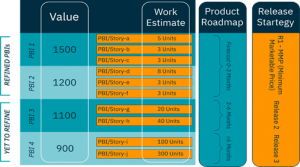When marketers take a hard look at their tech stacks, what other considerations are they acting on?
The added pressures of the pandemic had marketers taking a hard look at the value in their technology stacks and weighing the benefits of new features.
“Over the last 18 months, you know during this COVID time, a lot of organizations had their budgets frozen or were asked to reduce costs in marketing,” said Anita Brearton, CEO of tech management platform CabinetM. “So there was a lot of analysis happening around the tech stack.”
With 70 percent of the companies we surveyed having made some kind of marketing technology replacement in the last year, we asked Brearton to share some thoughts about the findings of the MarTech Replacement Survey at our recent MarTech conference.
“They have the opportunity to assess new products, and they find that they get more features for the same or less money then that’s a motivator to move forward,” Brearton said.
Here were some other considerations weighing heavily on organizations.
Scale
As organizations, or their marketing operations, continue to grow in scale, they have to look at other options.
“They tap out on what is probably a simpler, smaller platform and need to go to a bigger platform,” said Brearton. “And so we see that a lot.”
It’s less likely that a business will replace a big system that is integrated into so many marketing functions.
“That’s fairly unusual because those big systems cost a lot of money, and they require a lot of skill to operate them,” Brearton said. “So there’s a cost in terms of employee skills when replacing them, particularly in marketing automation. And then those marketing automation platforms are connected to so many other platforms.”
Because of the work involved in the replacement of a larger hub system, like the kind that runs marketing automation, often these replacements are planned a year or more in advance.
Anchor platforms
Especially when budgets are tight, it’s taxing and potentially risky to replace an “anchor” system that’s foundational to marketing strategies and operations.
This includes marketing automation, email automation systems, CDPs and the CRM, according to Brearton.
“Those are the central part of everybody’s tech stack,” she said.
CRM
Having said that, Brearton shared that CabinetM did replace their CRM during this time period. This helped the company streamline some of their automation.
“We were able to combine our marketing automation and CRM and do a lot more,” she said. “So I do think it’s a functionality issue. It’s a scaling issue.”
As a consulting tool for other marketers, this process has led CabinetM to rethink the CRM category, taking into account all players that have entered the scene.
“We’re rationalizing the CRM category on Cabinet M,” said Brearton. “At the moment there are hundreds of platforms in that category. It’s extraordinary, so I have to imagine that the sales people from all those platforms are busy knocking on doors and are finding some takers.”
Workflow and events tools
The popularity of adding workflow and events management tools to many stacks reaffirmed what many of us (including MarTech and the evolution of our virtual conferences) have experienced in the last 18 months.
In order for real work to be done virtually, organizations are upgrading their workflow platforms.
“I’m really encouraged to see this focus on workflow because I think it’s been too easy to rely on spreadsheets,” said Brearton. “And when you’re working remotely, that doesn’t give you the picture of the tasks and the flow of the tasks. So, I’m glad to see that people are adopting different workflow tools.”
E-commerce updates
For organizations that had an e-commerce business model before the pandemic, it would be a big ask for them to replace their core platform, especially when business through that channel was ramping up. But this didn’t mean that marketers weren’t considering ways to boost performance, experience and services for their e-commerce customers.
“I think people are not necessarily replacing their core e-commerce platform,” Brearton said. “But my guess is that they’re adding and swapping out all sorts of things that sit around it to improve their connection with customers, to improve personalization, or to enhanced loyalty and engagement.”
She added, “I think if somebody was answering a black and white question, did you replace your ecommerce system, they would be likely to say no. But if they were asked, did you replace e-commerce tools, you might have gotten a different answer there.”
Data & CDPs
Implementing a CDP is still a big project, especially for smaller organizations. With all the other fires to put out, this might not have been something high on a lot of lists. In many cases, orgs are using other anchor platforms for the time being.
“There’s the classic CDP platform which is storing all of the customer information and cleansing it and appending it and serving as a single source of truth,” said Brearton. “Other companies use one or more of their anchor platforms that serve that purpose. So a marketing automation platform could, for some companies, serve that purpose.”
She added, “We do see adoption of CDPs. We do believe it’s jumped over the chasm from marketing hype to actual adoption, and I think the numbers (for CDP) adoption are higher for bigger companies.”
Watch the full presentation from our MarTech conference here.
The post How marketers responded to the pandemic with stack replacements appeared first on MarTech.
MarTech(56)








